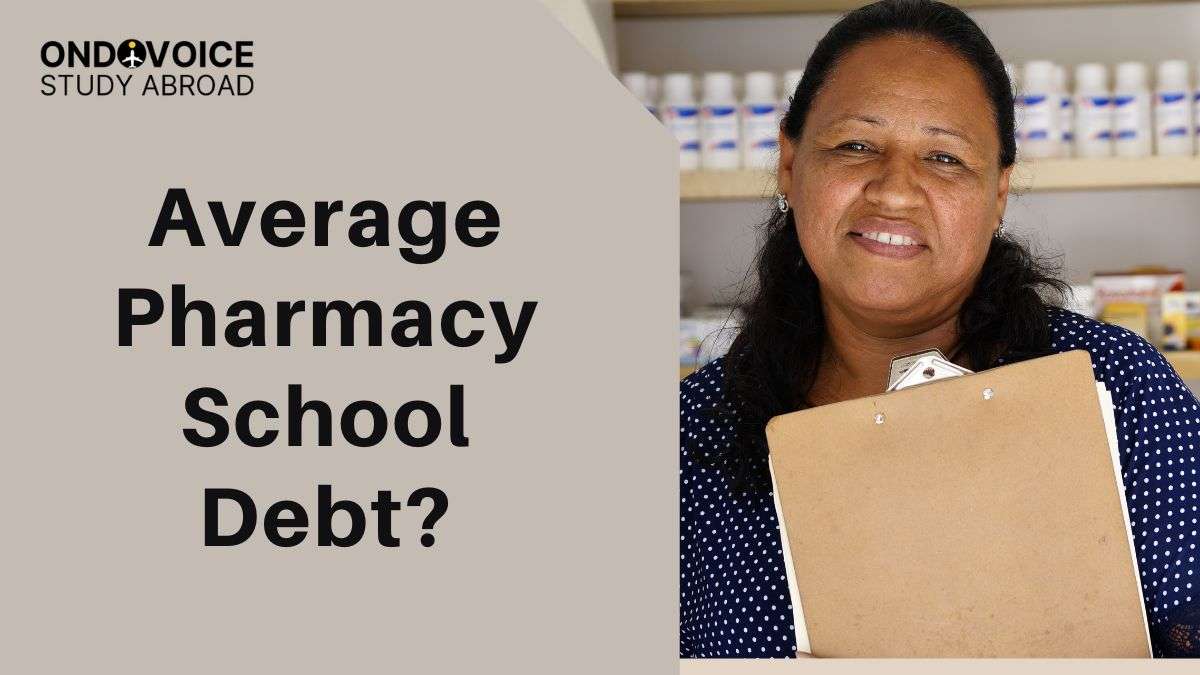While pharmacy education can provide a diverse range of job options, pharmacy school debt is no laughing matter.
According to research published by the American Association of Colleges of Pharmacy (AACP) in July 2021, student loans for pharmacists average $173,561.
If you’re thinking about going to pharmacy school and aren’t sure if the debt is worth it, here’s what you need to know about financing and repayment options.
What is the Average Pharmacy School Debt?
According to the American Association of Colleges of Pharmacy’s (AACP) study of pharmacy school graduates, around 85 percent of PharmD degree holders had to borrow money to get through school.
The average pharmacy school debt in 2021 will be $173,561. This is a little over 16 percent, above the average in 2015.
However, it’s worth noting that private pharmacy schools bias the average upward. While private pharmacy schools had an average of $204,617 in student loans, students at public colleges owed an average of only $143,302.
What goes into Pharmacy School debt?
Attending a pharmacy school means paying for more than just tuition. While specific fees vary, costs for pharmacy school generally include:
Tuition: Tuition differs significantly depending on whether you attend an in-state or out-of-state school, as well as whether you attend a public or private school. Tuition is the most expensive part of your pharmacy school debt because it includes your studies as well as the expense of attending your school.
Fees: Most colleges have fees included in their cost of attendance. These fees, such as a lab fee, transportation fee, or student services fee, are different at each school.
Books and supplies: Textbooks, computers, and other class supplies can add up. However, you can cut down costs in this category by buying or renting used textbooks and looking for sales on your supplies.
Living costs: No matter where you decide to go to school, you will need to pay for food and somewhere to live. You can choose to live on campus, off campus, or at home.
Read also: 8 Student Loan Alternatives to Pay for College Tuition without Owing
What are the Average Interest Rates on Pharmacy School Student Loans?
The interest rates on your pharmacy school debt can vary depending on the type of student loans you have and when you applied for them. While federal student loan interest rates are standardized — everyone who qualifies gets the same terms — rates are updated once a year and vary based on loan type.
| School Year | Direct Loans for Undergraduate Students | Direct Loans for Graduate and Professional Students | Direct PLUS Loans for Parents and Graduate and Professional Students |
|---|---|---|---|
| 2021-22 | 3.73% | 5.28% | 6.28% |
| 2020-21 | 2.75% | 4.3% | 5.3% |
| 2019-20 | 4.53% | 6.08% | 7.08% |
| 2018-19 | 5.05% | 6.6% | 7.6% |
| 2017-18 | 4.45% | 6% | 7% |
| 2016-17 | 3.76% | 5.31% | 6.31% |
| 2015-16 | 4.29% | 5.84% | 6.84% |
Interest rates decreased dramatically in the 2020-21 school year as a result of the coronavirus pandemic.
While they are slightly higher for the 2021-22 school year, the low-interest environment has persisted.
If you borrow private student loans, your interest rate will depend on the lender you chose and your creditworthiness.
As of September 2021, private student loan interest rates range from just above 1 percent to just under 15 percent.
With private student loans, you can usually choose between fixed and variable rates. Variable rates typically start lower, though you risk your rate climbing over time.
One thing to note with student loans is that most accrue interest while you’re in school, even if you’re not making payments, the only exception being Direct Subsidized Loans, which are available only to undergraduate students with financial needs.
Once you start making payments, any interest that has accrued will be capitalized and added to your principal balance.
How Long Does it take to Repay Pharmacy School Student Loans?
The standard repayment term for federal student loans is 10 years, and private student loan companies may offer repayment terms ranging from five to 20 years.
But since the average student loan debt for pharmacists is much higher than the average for all college graduates, you may need to opt for a repayment plan on the longer side to keep monthly payments low. If you have federal loans, you may be able to extend your schedule up to 30 years, depending on the program.
| Repayment Plan | Repayment Term |
|---|---|
| Consolidation Loan | Up to 30 years |
| Extended | 25 years |
| Pay as You Earn | 20 years |
| Revised Pay as You Earn | Up to 25 years |
| Income-Based | Up to 25 years |
| Income-Contingent | Up to 25 years |
If you have private student loans, your repayment term will be what you chose when you first applied. If you can’t afford that, though, you can refinance your student loans to get a longer term.
Ultimately, though, the amount of time it’ll take you to pay off your pharmacy school debt will depend on how much you owe and your salary during the first stage of your career.
Tips for Reducing Pharmacy School Debt
There are plenty of opportunities to pay down your pharmacy school student loans, some of which involve assistance from an outside source. Here are some options to consider.
Pharmacist Student Loan Forgiveness Programs
If you have federal student loans, the U.S. Department of Education may offer forgiveness of your debt if you work full-time for a government agency or eligible not-for-profit organization and meet other eligibility criteria.
The Public Service Loan Forgiveness program requires you to make 120 qualifying monthly payments on an income-driven repayment plan. After you meet all the requirements your full remaining balance will be forgiven.
You can also receive forgiveness if you’ve completed an income-driven repayment plan and still have a balance left over. Remember, though, that these plans extend your schedule by 20 or 25 years, which means that you’ll be indebted for a long time until you qualify for relief.
Student Loan Repayment Assistance Programs
Only the Department of Education can offer pharmacist student loan forgiveness. But you may also qualify for student loan repayment assistance programs through a federal or state agency. In the medical field, many of these programs are limited to practicing physicians, nurses, and workers in similar career paths.
For example, the National Institutes of Health and the Health Resources and Services Administration both offer programs with student loan repayment assistance. Speak with your school’s financial aid office to get an idea of all that’s available for pharmacy school graduates.
Student Loan Refinancing
If you don’t qualify to get assistance with reducing your student loan debt, student loan refinancing may be an excellent alternative.
With student loan refinancing, you’ll replace your existing loans with a new one through a private lender. Interest rates vary based on your creditworthiness, but depending on what you’re paying now, you may be able to get a lower interest rate and save money.
Student loan refinancing is also the only way to extend your repayment term on private student loans — or even shorten the schedule if you can afford it.
Just remember that if you’re working toward student loan forgiveness or repayment assistance, or you want to take advantage of an income-driven repayment plan, refinancing may not be the best path for you, because you’ll no longer qualify for those benefits once your federal loans become private loans.
Is being a Pharmacist Worth it?
Is it worth it to go for pharmacy school loans? Finally, each student must decide whether pursuing a profession in pharmacy is worth the expense of attending pharmacy school.
According to Glassdoor, pharmacists make an average of slightly over $122,000 per year nationwide, and you could make much more as a company owner if you create your pharmacy.
Aside from possible wages, you should think about how enthusiastic you are about your topic of study.
Conclusion
Regardless of which path you take, consider whether you’ll still want to be in the industry five, ten, or more years from now because you’ll most likely still be paying off your student loans.



 Jobi.ng
Jobi.ng




